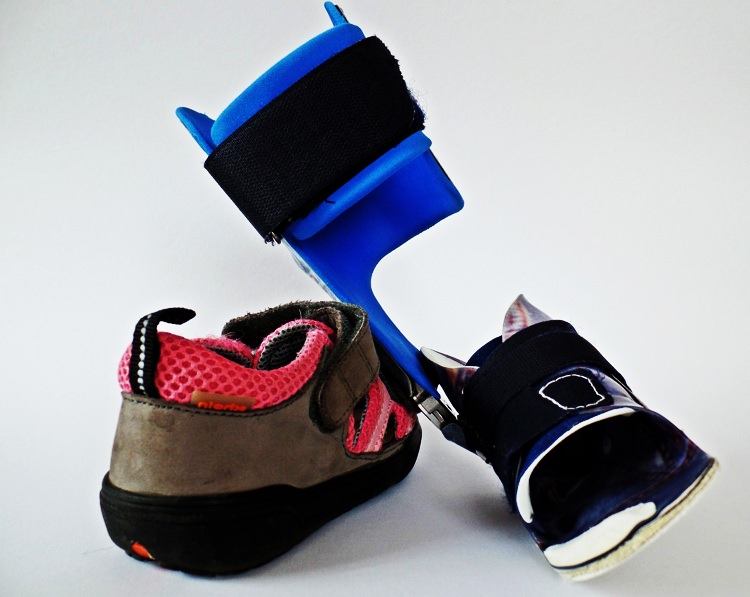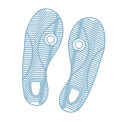The Origins And Evolution of Orthotics: How Ergonomic Footwear Began
Posted by Fred Thompson | Wednesday, February 6th, 2019 | 6,271 views
Most people tend to think of foot orthotics as a relatively modern invention, but in fact they’ve been around in one form or another for centuries. The first known case of foot correction devices date back nearly 2000 years.
One correction device incorporated layers of wool inserted into sandals to relieve foot strain and fatigue. This gave the wearer a bit of extra cushioning and relieved the pain that comes with long-distance walking. Since this person most likely spent most of the day on his feet, this advancement in footwear surely came in handy.
 The first recorded use of arch support was in 1865. In that year a man named Everett H. Dunbar from Bridgewater, Massachusetts, relieved the pain in the arch of his feet by inserting pieces of leather between the insole his shoes, which he found gave him extra boost in arch support. Modern footwear has come a long way from where it first began in the 20th century.
The first recorded use of arch support was in 1865. In that year a man named Everett H. Dunbar from Bridgewater, Massachusetts, relieved the pain in the arch of his feet by inserting pieces of leather between the insole his shoes, which he found gave him extra boost in arch support. Modern footwear has come a long way from where it first began in the 20th century.
The Study of Orthotics
The actual study of orthotics began with the ancient art of splint and brace making. The professionals who we now call orthopaedic surgeons and orthotists evolved from bonesetters and brace makers.
Many of today’s modern prescription orthotics were developed based on the early prosthetics that were needed for soldiers during battle. Many injured soldiers returned home from battle with traumatic amputations, so wooden prosthetics were utilized to help them.
In 1905 Whitman Brace developed an orthotic device which showed promise in relieving painful foot and arch pain. Whiteman’s device was picked up by an orthopedist named Royal Whitman who promoted the device on Whitman’s behalf.
In 1906 the popular Dr. William Scholl (Dr. Scholl’s) also came out with a lighter, much more flexible metal support called the Foot-Easer.
Every major war called for improvement and advancements of amputation surgical techniques and prostheses. It wasn’t until the 20th century when the most important discoveries and developments were made to the orthotic sciences. The 1920s and the 30s saw a wave of corrective shoe production.
Prosthetic shoes guaranteed to prevent, fix or relieve an array of foot and mobility issues. The devastating aftermath of the first and second world wars, along with the polio epidemics of the late 1940s and early 1950s saw injured veterans who required neuromuscular and skeletal treatments. To improve the quality and performance of assistive devices at the end of World War II, the U.S government sponsored a series of research and development projects that would change the way in which orthotics would be practiced. Over time, corrective shoes became a major aspect of the footwear industry, and a very lucrative one.
Between 1945 and 1976, the Veterans Administration, universities, private corporations and other military research units were hired to conduct numerous prosthetic and orthotic research projects. While the main focus of the Artificial Limb Program was prosthetics, it was expected that these efforts would benefit orthotics as well. The demand for corrective shoes was so high that there were close to 1000 different brands in the market, including 200 doctor shoes.
The advertising campaigns were so outrageous that the Federal Trade Commission was forced to issue cease and desist orders. This calamity caused the corrective shoe industry to fade away for a time.
The Modern Era of Orthotics
It wasn’t until the early 1960s that innovations in prosthetic and orthotic designs were influenced by adapting industrial techniques for vacuum forming sheet plastics.
The National Academy of Sciences National Research Council began to promote many disciplines of scientific research initiatives into human locomotion, biomechanics, and the creation of new materials and devices. Orthotics gained new traction as materials became lighter, more flexible and stronger.
By the late 1970s, jogging became trendy and athletic footwear was on the rise. Foot orthotics developed even more rapidly as athletes reported more foot and lower limb injuries, so the orthotics industry responded.
Between the 1980s and 1990s athletic shoes came with orthotic features like flared heels, contoured sole inserts, and underfoot cushioning. The medical community and doctors began specializing in sports medicine, which included orthotics as a standard part of treatment.
Health care educators presently confront an enormous difficulty keeping up with the pace of the unprecedented growth and development in computer technology, materials science and rehabilitation medicine.
Orthotics is changing from a profession dominated by small practices and skilled craftsmen to one that is becoming increasingly centralized. This technological change caused a need for more analytical and scientifically oriented professionals.
Kinesiology has expanded to include the advancements in orthotics and ergonomic footwear devices. This is also because of the growing need for technical competence and stresses the importance of standardized educational requirements.
In the past, practitioners were either self-taught or they learned their skills as an apprentice. They learned first-hand by observing and working long hours with a master craftsman, and they seldom ever had any formal post-secondary education.
But with new inventions and technological advancements, more in-depth and detailed knowledge of the sciences and allied health care became crucial. This is why standardization is paramount today. This important development is an acknowledgement that orthotics is equal with other areas of the health care field.
Today, professional certification includes requiring a bachelor’s degree, a year of internship, written, practical, and oral examinations. Changes in professional status, certification, business management, patient management, mode of service delivery and the use of prefabricated orthoses make the field of orthotics a fascinating are of study and discovery.

